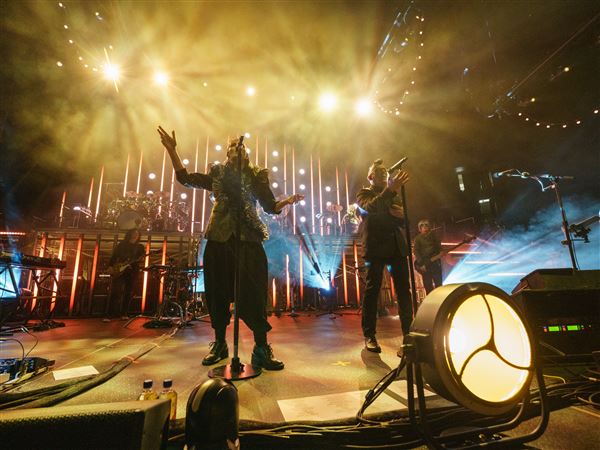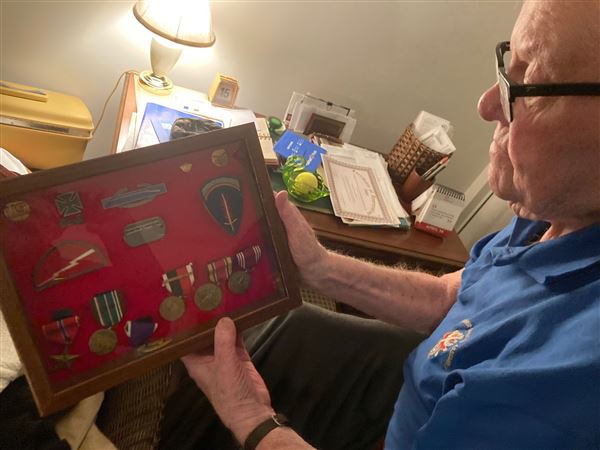Austrian choreographer and filmmaker Willi Dorner has been making an Internet/YouTube name for himself with sculptural concoctions using human bodies. Usually his dancers perform in a colorful and casual array of T-shirts, sweats, hoodies and tennis shoes. They are placed in a jigsaw puzzle of rounded, Henry Moore-esque proportions -- butt to butt, topsy turvy, feet in the air, all askew -- and usually tucked away in angular urban corners of the street like human sausages.
But, even in the videos, the accent was on the final arrangement. Was it dance?
A curious crowd, including me, went to the more formal confines of the Kelly-Strayhorn Theater last weekend to find out what's up with "above under inbetween."
At Saturday's performance, a man came out with a roll of masking tape. Stopping periodically to eyeball the audience, he defined a small square on the stage. Six others walked through the audience (not latecomers) and joined him, all comfortably packing into the square.
As they moved to the back of the stage, two real latecomers came in and took a seat in the audience. It caused us to think as the dancers easily regrouped in the square, staring at the audience while a quiet electronic soundscore filled with gloops and glops emerged. A subway?
They began a new formation by squatting in the square, one at a time, facing away from the audience. But the woman in the pink T-shirt was the odd person out -- no room for her, or so it seemed. So she carefully climbed up and squatted on someone's shoulders.
You had to love the group -- named Cie. Willi Dorner -- because the whole performance is a series of happy endings. Nonplussed humans who move close to slow butoh speed, yet solve a series of Rube Goldberg machinations with their bodies and a few simple props.
With an almost childlike imagination, they thought outside the box, so to speak. Outside the chair, the bed, the table. Out of this world.
The dancers slithered between the chair legs. Made a table with human legs. They observed the arrangements, then cuddled and tucked. They also snuggled into wickedly awkward positions without prejudice.
Of course, it was all a delicate balancing act. It was artful. But still, was it dance?
Of course Dorner's style required a certain amount of flexibility and strength to do an armless dive onto a table or to make a three-human chair from a standing position. There was an inherent rhythm and precision to the six-person knee hinge.
Was it simple artful acrobatics? Dorner went beyond that in the careful and deliberate transitions, so the audience made the journey with the performers.
Beginning with simple formations, he gradually built an almost architectural complexity into the scenes. There was only one small part of the "finale," where Dorner parlayed performers and furniture into a Rube Goldberg-inspired domino effect, that the delicious humanity of it all was temporarily lost.
But, on the whole, Dorner and company have produced dance without artifice, movement by articulate design. Now I'm eyeing one of my dining room chairs in a whole new light.
First Published: September 21, 2009, 4:00 a.m.














